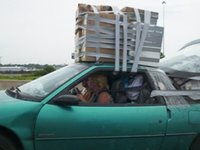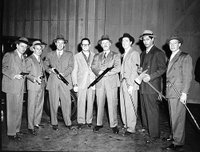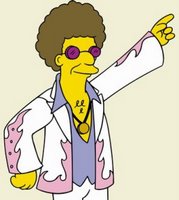
When Singapore gained independence in 1965, it faced a host of survival problems: high unemployment, water shortage, no defence capability and a hostile region. To address these issues, the Parliament of Singapore has worked diligently and enacted many important legislations: building of the military, public housings, economic policies and recycling of water. However, one legislation was featured prominently above the rest and has persistently put the small country on the spotlights of international attention:
the infamous Chewing Gum Ban.
The effect of banning this small piece of confectionery cannot be underestimated. Since the ban was introduced, political analysts 1, business lobbyists, and civil rights activists have discussed extensively the social, political, economic, health (dental hygiene) and psychological impact of this ban. After all, this is an example of governmental control, in the name of good public policy, to restrict the distribution and sales of a commodity and the private lifestyle habits of its ordinary citizens.
HistoryA clean MRT train. Such trains were the scene of vandalism in 1991, which prompted the chewing gum ban. (Source: Land Transport Authority, Singapore)In his memoir 2 , Lee Kuan Yew recounted that as early as 1983, when he was still serving as Prime Minister, a proposal for the ban was brought up to him by the minister for national development. Chewing gum was causing serious maintenance problems in high-rise public housing flats, with vandals disposing of spent gum in mailboxes, inside keyholes and even on elevator buttons. Chewing gum left on floors, stairways and pavements in public areas increased the cost of cleaning and damaged cleaning equipment. Gum stuck on the seats of public buses also constantly vexed passengers. However, in spite of his authoritarian reputation, Lee thought that a ban would be
"too drastic" and did not take action.
In 1987, the S$5 billion metro system, the Mass Rapid Transit (MRT), began operations. It was then the largest public project ever implemented in Singapore, and expectations were high. One of the champions of the project, Mr Ong Teng Cheong, declared: " …the MRT will usher in a new phase in Singapore's development and bring about a better life for all of us."
It was then reported that vandals had begun sticking chewing gum on the door sensors of MRT trains, preventing the door from functioning properly and causing disruption of train services. Such incidents were rare but costly and culprits were difficult to apprehend. In January 1992, Goh Chok Tong, who had just taken over as Prime Minister, decided on a ban. The restriction on the distribution of chewing gum was enacted in Singapore Stature Chapter 57, the "Control of Manufacture Act", which also governs the restriction of alcohol and tobacco.
A Nation without Chewing Gum After the ban was announced, the import of chewing gum was immediately halted. However, a reasonable transition period was given to allow
shops to clear their existing stocks. After that, the sale of chewing gum was completely terminated.
There is a common misconception that chewing gum is illegal in Singapore. However, the ban only prevents the import and sale of chewing gum, not its consumption. In fact, foreign visitors and returning residents are legally allowed to bring small amounts of chewing gum into the country for personal consumption.
When first introduced, the ban naturally caused much controversy and some open defiance. Some took the trouble of traveling to neighbouring Johor Bahru to purchase chewing gum. A few tried to bring back more than what is legally permitted. These offenders were publicly "named and shamed" by the government, to serve as a deterrent to other would-be smugglers. As time passed and the uproar died down, however, Singaporeans became accustomed to the lack of chewing gum. Surprisingly, no black market for chewing gum in Singapore ever emerged.
Singapore's sidewalks have continued to stay gum-free. A new generation has grown up devoid of chewing gum, with few significant repercussions. Tourists visiting Singapore enthuse about how they no longer need to pick gum off their shoes when walking on the streets. Today, it is generally agreed amongst citizens that the advantages of the ban far outweigh the side-effects.
International Attention
In the mid 1990s, Singapore's forbidding laws began to receive intense international coverage and attention from liberal civil rights activists. The U.S. media sensationalised the case of Michael P. Fay, the American teenager who was sentenced to caning in Singapore for vandalism (spray paint, not chewing gum). They also zeroed in on Singapore's other peculiar laws, including the mandatory flushing in
public toilets ruling. It was around this time that Singapore developed its infamous "nanny state" image, where the movements of every citizen are constantly scrutinised and dictated by the government. A common joke is that Singapore is a "fine" country, a jibe at the excessive number of fines Singapore imposes for seemingly harmless acts like jaywalking. Most of the outside world saw laws such
as the ban on chewing gum as excessively aggressive and even autocratic.
Singapore leaders responded by arguing that as a sovereign state, Singapore had the rights to formulate its own policies based on its own unique political and cultural values. Besides, they argued, these policies would result in greater overall benefits for the country. When a BBC reporter suggested that overly draconian laws would stifle the people's creativity, Lee Kuan Yew retorted: "If you can't think
because you can't chew, try a banana."
 Basel II is a round of deliberations by central bankers from around the world, under the auspices of the Basel Committee on Banking Supervision (BCBS) in Basel, Switzerland, aimed at producing uniformity in the way banks and banking regulators approach risk management across national borders. The Bank for International Settlements (often confused with the BCBS) supplies the secretariat for the BCBS and is not itself the BCBS.
Basel II is a round of deliberations by central bankers from around the world, under the auspices of the Basel Committee on Banking Supervision (BCBS) in Basel, Switzerland, aimed at producing uniformity in the way banks and banking regulators approach risk management across national borders. The Bank for International Settlements (often confused with the BCBS) supplies the secretariat for the BCBS and is not itself the BCBS.















































 Add my feed to your Rss
Add my feed to your Rss
